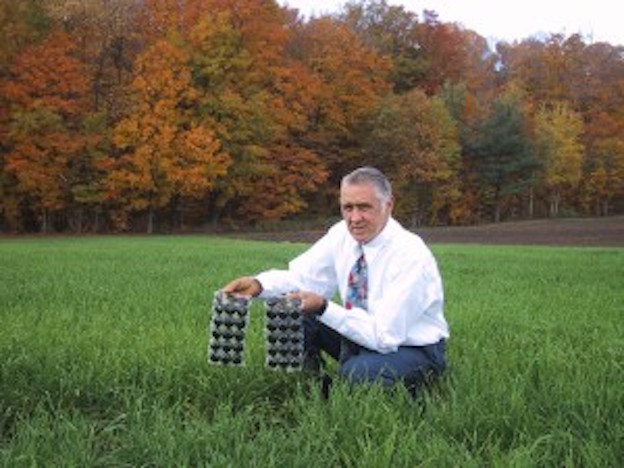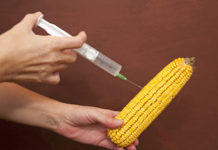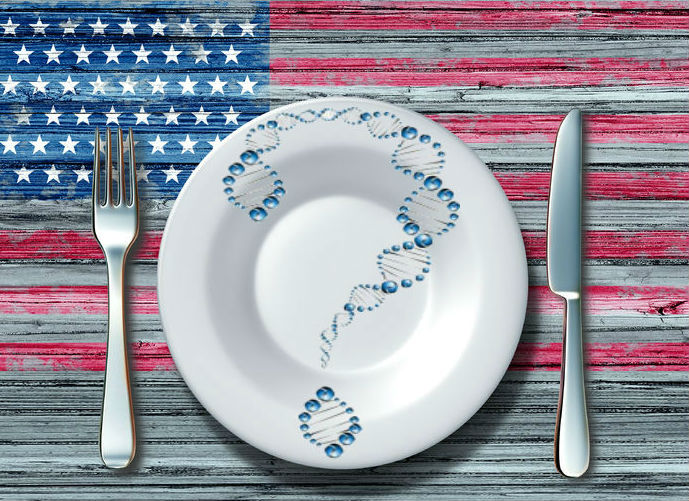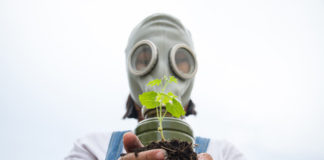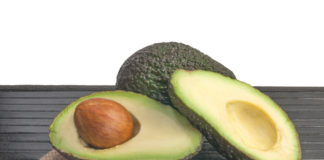GMOs Destroy Biological Diversity
Before the invasion of GMO’s in the late 1990’s, I used to worry about the differences between conventional and organic crops. I wrote several articles comparing conventional and organic crops to show how much more nutritious organic was. Back then I thought that was a big deal. I never even heard of genetic diversity or biological diversity back then

You see, farmers rely on genetic and biological diversity for healthy crops that have a natural resistance to disease. A loss of genetic diversity inevitably leads to a loss of biological diversity Without that diversity, crops lose their fitness for reproduction and are more susceptible disease. Another word for that loss of biological diversity is “inbreeding,” i.e., repeated matings between closely-related individuals, when harmful genes reduce a plant’s fitness for survival. Inbreeding depression is a trend in many plants with small populations sizes and greatly increases their risk of extinction.
Books like Shattering: Food, Politics, and the Loss of Genetic Diversity written all the way back in 1990, reviewed the development of genetic diversity over 10,000 years of human agriculture. The book then looks at what would happen if we lost the genetic diversity of our food crops at the hands of political and economic forces. It’s as if they were talking about our future — and the advent of Monsanto & Friends GMO crops.
Conventional Crops are now Non-GMO Crops
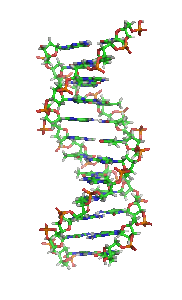
GMOs are genetically engineered with genes from other organisms. They take genes from bacteria, viruses, insects and other plants or animals. These are artificially inserted into the DNA of soybeans, corn or wheat, which never happens naturally. Rice that has been engineered with human genes is already being tested in Junction City, Kansas by Ventria Bioscience for new prescriptions. Jane Rissler (Union of Concerned Scientists) told the Washington Post, “It is unwise to produce drugs in plants outdoors.” Now that’s an understatement!
Ventria developed three varieties of GMO rice, each with a different human gene. Two of them are engineered to make compounds found in human breast milk and saliva. They promise it won’t get into the wild, of course. Meanwhile, the USDA revealed that rice in Arkansas became contaminated with a different GMO that ultimately was never approved. Another GMO variety of rice has caused contamination so serious that it actually disrupted U.S. rice exports. The USDA’s credibility has been further damaged by the discovery of unapproved GMO StarLink corn in our food supply, as well as the accidental release of GMO crops engineered to make a vaccine for pig diarrhea.
All this underscores that GMO’s will ultimately be much more toxic for you and me, as well as the environment. In fact, GMO’s may eventually destroy the “genetic diversity” of our entire food supply, slowly killing us all.
Monsanto’s Real Purpose
The first thing you have to understand is that Monsanto’s ONLY real purpose for inventing GMOs was to increase sales of their highest profit items — the chemical fertilizers and pesticides that GMO’s need to grow. But nature had something to say about this so fought back — creating weeds resistant to Monsanto’s Roundup (glyphosate).
Not to be outdone by Mother Nature, Monsanto re-engineered their GMO crops. Now they can survive three times the levels of Roundup (glyphosate). Even that’s just a temporary fix. Soon we’ll have super-duper-weeds. Then we’ll need six times more Roundup. But it’s all just more profit for Monsanto!
GMO’s are Destroying Our Genetic & Biological Diversity
There are unknown consequences to altering an organism with alien genes, from serious risks to the environment and humans to new allergens and antibiotic-resistance in our gut flora. In the wild, the transfer of genes between GMO’s and their natural counterparts often has alarming consequence. For example, transgenic fish accidentally released into the wild eventually threatened the viability of both the natural fish as well as the transgenic version.
When a crop’s genetic diversity is damaged, it has many long-term consequences. An organism’s “genotype” regulates multiple characteristics. Body size or shape, reproductive characteristics, tolerance to environmental extremes and seasonal cycles, disease resistance, and much more can be adversely affected. This genetic diversity, or variation in our environment, is one of the most important factors for healthy organisms.
Various conditions affect living organisms differently, from the weather to soil condition. Genetic diversity helps organisms deal with such variables in our environment because it is always changing. This is called the natural or historic range of variability. If an organism is living in a stable environment then a narrow range of genetic characteristics (called “phenotypes”) could evolve just for these conditions.
If an environment is unpredictable, however, these differences go through the process of natural selection so new traits can evolve with tolerance to these conditions. The lack of genetic diversity can cause serious long-term problems with natural selection. Genetically uniform populations like GMO crops are infamous for being highly vulnerable to pests, diseases and other problems. They wouldn’t even survive without lots of Roundup (glyphosate) from Monsanto (their real “cash crop”).
REAL Ecological Communities Need REAL Genetic Variation
In order to compete successfully in the environment, natural crops need real genetic diversity to reduce the deleterious effects of inbreeding. This is why genetic diversity is one of the most important survival traits in the evolution of every species on earth — plant or animal. Genetic diversity is the key trait that all organisms used to survive for thousands of years. No organism can ever be perfectly adapted or engineered for all possible conditions. The diversity of an organism, or its ability to adapt to “environmental uncertainty,” is the key to evolution of healthier populations. But when agribusiness companies create GMOs, reducing genetic diversity, it’s a step towards the “extinction vortex.”
GMO’s are engineered to survive as long as they’re treated with tons of chemical pesticides and fertilizers. The underlying problem is that GMO’s don’t need healthy, living soil at all. In fact, GMO farming is actually “killing” the soil so that nothing can grow there without these costly chemicals provided by Monsanto & Friends.
The destruction of farming by multinational corporations like Monsanto is actually not a new development. In the late 1990s, even before the advent of GMOK’s, these corporations were developing more uniform, more profitable crops. Over 7,000 varieties of apples once grew in America, but most are gone now. But you can buy GMO Arctic Apples today. Virtually all the broccoli varieties from 1900 are now gone, as well. Instead, Monsanto & Friends have been buying up seed companies for over two decade and now threaten the gene pool of our most important food crops.
For thousands of years farmers have been relying on the genetic diversity in our food crops to prevent disease and provide a rich harvest. But for the last 20 year or so, Monsanto & Friends convinced farmers to rely on GMOs that would die without tons of herbicides and pesticides. This vicious cycle is ruining the environment needed for healthy, natural crops and makes farmers more and more dependent on Monsanto & Friends.
The evolution of genetic and biological diversity took over 10,000 years of human agriculture but it may be gone within our lifetime! If we’re lucky, it may not be too late to do something about it. Many concerned, aware farmers are turning to non-GMO and organic farming methods to save their farms, save their livelihood and protect the natural environment we often take for granted.
The Importance of Live, Healthy Organic Soil
 Fertile, healthy soil is the main basis for naturally healthy plants, animals and even humans. Organic matter in the soil is the foundation for healthy soil. Understanding how organic matter keeps soil healthy is essential for developing sound agricultural practices. But GMO’s and chemical-based agriculture is rapidly destroying our farmland by killing the living soil. Most American farmland is now mostly devoted to GMO’s and only a small percentage is used for organic agriculture.
Fertile, healthy soil is the main basis for naturally healthy plants, animals and even humans. Organic matter in the soil is the foundation for healthy soil. Understanding how organic matter keeps soil healthy is essential for developing sound agricultural practices. But GMO’s and chemical-based agriculture is rapidly destroying our farmland by killing the living soil. Most American farmland is now mostly devoted to GMO’s and only a small percentage is used for organic agriculture.
The soil used to grow GMO crops is now dead. It is no longer rich with the living organisms that our crops once relied on. But nature always finds a way; so new organisms have evolved to thrive under these “dead” soil conditions. Say hello to our new “super weeds.” Super weeds cannot be killed easily so farmers spray more and more Roundup (glyphosate) to kill them. Roundup isn’t cheap, so this can cost farmers so much they can’t make a profit. It’s often profitable for farmers to switch to non-GMO or organic crops. That would be a good thing, but Monsanto came up with a solution – crops that can survive three more glyphosate!
Instead, what’s actually happening is that GMO’s are destroying everything that humans hold dear — all in the name of profit for Monsanto & Friends. They pull every trick in the book to fool you and the rest of the world into believing their Monsanto-sponsored, short-term, heavily biased studies and outright lies.
GMO’s are Killing our Environment.
The toxic chemicals that GMO’s need to survive are destroying the health of everything on our planet slowly but inevitably. Every country around the world, even those that banned GMO’s, will eventually be negatively affected.
Organic and non-GMO foods are the best and the last defenses we have against this insanity. Please make a commitment to eat as much fresh, raw, organic or non-GMO whole foods as you can. You’ll soon discover that it’s both cheaper and healthier to eat, especially when you consider all the real costs and health consequences of a toxic, GMO diet.
GMO’s & Glyphosate are Slowly Killing You!
The “shikimate pathway” controls the ability of plants to synthesize amino acids. Though it’s totally disrupted by glyphosate, “scientists” thought it was only found in soil bacteria. What they all failed to understand is that the shikimate pathway is also essential for the bacteria found in your own gut! Your body needs it for digestion, to synthesize vitamins, for your immune system and much more.
Glyphosate Damages the Healthy, Beneficial Bacteria Your Body Needs
By damaging your body’s ability to make some essential amino acids, glyphosate inhibits the cytochrome P450 (CYP) enzymes produced by your gut “microbiome” — a community of microorganisms (bacteria, fungi, viruses, etc.) that live in or on the human body. CYP enzymes are critical to human biology because they detoxify “xenobiotics,” the foreign chemicals that we are all exposed to every day in our modern, toxic environment.
We are more vulnerable to the dangers of environmental toxins in general when constantly exposed to exposed to Roundup (glyphosate). This toxic exposure is slow and takes months or years but eventually it gains traction at the cellular level. The results are like a list of the “diseases of civilization” associated with our modern lifestyle … obesity and gastrointestinal disorders, diabetes, heart disease, autism, cancer and many more.
The Reason Why Wheat is Toxic — & it’s not a Gluten Allergy!
Roundup (glyphosate) is also these days as a pre-harvest dessicant for many crops. This includes wheat, barley, sugar cane, rice, seeds, dried beans, sweet potatoes and sugar beets. The U.K. Soil Association even called for a complete ban on glyphosate for ripening and desiccation. The use of the herbicide on wheat increased 400% in the past 20 years. Today, glyphosate residues are commonly found even on non-GMO wheat.
- Glyphosate’s Suppression of Cytochrome P450 Enzymes and Amino Acid Biosynthesis by the Gut Microbiome: Pathways to Modern Diseases
- Institute of Responsible Technology: Monsanto’s Herbicide–Featuring the Darth Vader Chemical
- Mesnage R., Bernay B., Séralini G-E. (2013, in press). Ethoxylated adjuvants of glyphosate-based herbicides are active principles of human cell toxicity. Toxicologyhttp://dx.doi.org/10.1016/j.tox.2012.09.006
- Séralini G. E., et al. (2012). Long term toxicity of a Roundup herbicide and a Roundup-tolerant genetically modified maize. Food and Chemical Toxicology 50 (11): 4221-4231.
- Séralini G. E., et al. (2013). Answers to critics: Why there is a long term toxicity due to NK603 Roundup-tolerant genetically modified maize and to a Roundup herbicide. Food and Chemical Toxicology
- Glyphosate now commonly found in human urine, http://articles.mercola.com/sites/articles/archive/2012/10/23/glyphosate-found-in-human-urine.aspx
- Study: Glyphosate, Celiac and Gluten Intolerance, http://people.csail.mit.edu/seneff/ITX_2013_06_04_Seneff.pdf
- The Glyphosate, Celiac Disease Connection, http://articles.mercola.com/sites/articles/archive/2014/09/14/glyphosate-celiac-disease-connection.aspx?
- Is it the Gluten or is it the Glyphosate? http://www.examiner.com/article/is-it-the-gluten-or-is-it-the-glyphosate
- Pre-harvest Application of Glyphosate to Wheat, http://www.hgca.com/media/185527/is02-pre-harvest-glyphosate-application-to-wheat-and-barley.pdf
- Glyphosate’s Suppression of Cytochrome P450 Enzymes and Amino Acid Biosynthesis by the Gut Microbiome: Pathways to Modern Diseases, http://www.mdpi.com/1099-4300/15/4/1416
- Yield and quality of wheat seeds as a function of desiccation stages and herbicides, http://www.scielo.br/scielo.php?script=sci_arttext&pid=S2317-15372014000100008&lng=en&nrm=iso&tlng=en




